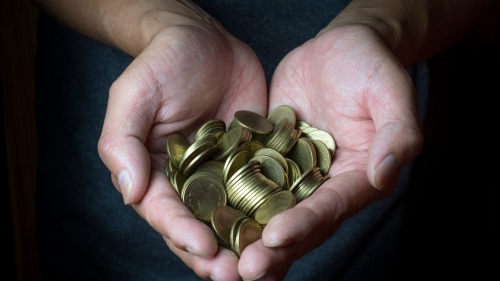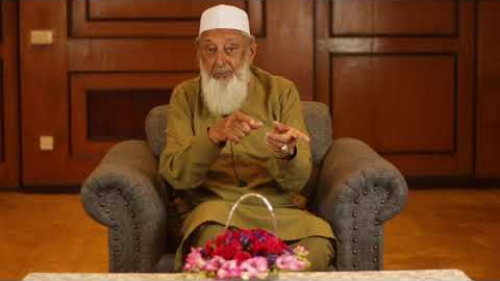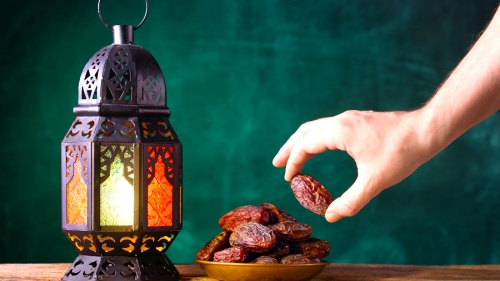Sugar Reduction: The Sweet and Low of It

Bashir Ali 1Name changed to maintain the privacy of interviewee. lost both his parents to the fatal effects of diabetes. He witnessed his parents suffer from strokes, vision loss, and gum, heart, and kidney disease, all consequences of the uncontrolled sugar levels in their bodies.
“Their quality of life was lost early on, and I don’t want the same for myself,” says Ali.
Ali was diagnosed with diabetes in 2016 at the age of forty-four. He knew it was inevitable with his gene pool. Not only did both his parents suffer from it, but so did his four grandparents. According to the Centers for Disease Control and Prevention, “more than 37 million Americans have diabetes (about 1 in 10). Type 2 diabetes most often develops in people over age 45, but more and more children, teens, and young adults are also developing it."
For the last seven years, Ali has been working with his doctor to regulate his blood sugar through medication to little avail. Recently, Ali was informed that he would need to start taking insulin (a hormone produced in the pancreas that regulates the amount of glucose in the blood) if his A1C levels do not decrease.
According to the American Diabetes Association, this relatively simple A1C blood test gives a picture of one’s average blood glucose levels over the past two to three months. The higher the levels, the greater the risk of developing complications.
“I finally decided to get serious about my sugar intake,” says Ali. “I don’t want to have to take insulin injections.”
There are many diseases linked with high sugar intake, like heart disease, diabetes, and cancer. Sugar is addictive and interferes with the body’s natural hormones that regulate hunger and satisfaction, which can cause excessive cravings and overeating. It can harm one’s metabolism, leading to increased insulin and fat storage.
In just one month of significantly reducing his sugar consumption, Ali has already lost ten pounds. If he does get a sugar craving, he will turn to a moderate amount of fruit. The biggest elimination of sugar from his diet has been from no longer drinking soda.
“I was drinking soda five to six times a week,” states Ali. “I just had to quit it all together and not look into any alternatives. Even my last eye exam was better at age fifty-one. My father lost vision in one eye due to his diabetes. These are all wake-up calls.”
The first general recommendation Dr. Saadia Mian, an endocrinologist in southeastern Michigan, gives to her patients who need to reduce sugars is to decrease or give up sugary drinks and foods with added sugars. These can be juices, carbonated drinks, or sweetened tea or coffee.
“When you drink the sugar instead of eating it, your blood sugar spikes very quickly, which then spikes the insulin level to bring down the sugar,” explains Dr. Mian. “Insulin is the bridge that takes sugar from the bloodstream to our cells. When there is a defect with the insulin bridge, sugar can’t get into the cell and is floating around in the bloodstream. The body thinks it needs more insulin and produces more, but then the pancreas can’t keep up. The high insulin levels can lead to weight gain, diabetes, hormone abnormalities, and other health issues.”
According to Dr. Mian, other ways to reduce blood sugar are eating less and exercising more. She states that moving more increases insulin sensitivity and supports blood sugar coming out of the bloodstream.
“The main thing is to avoid processed sugars,” Dr. Mian advises. “And, yes, you can do it cold turkey. It takes roughly ten to fourteen days for our palates to change and for our taste buds to alter what they crave. Even two weeks without sugar can make a significant difference. Once that cycle is broken, it’s easier to make better choices.”
Dr. Mian attributes the compromised quality of consumption, as well as environmental toxins, to the reason why younger generations are dealing with more hormonal issues like polycystic ovarian syndrome (PCOS) and insulin resistance than their own mothers.
How much is too much added sugar, though? The American Heart Association suggests a daily added-sugar limit of about six teaspoons for most adult women and no more than about nine teaspoons of sugar for most men. An eight-ounce can of soda alone has twenty-six grams of sugar. The same amount of orange juice has twenty-four grams of sugar, or the equivalent of four oranges.
Tooba Zafar of Des Plaines, Illinois, was shocked to learn how much added sugar was in her daughter’s snacks.
“I could not believe what I found in basic foods like bread, juice, granola bars, and yogurt!” recalls Zafar, who is studying couple and family counseling. “Sugar wasn’t always a weakness for me, but now it seems to be, especially when I have not slept well or am too stressed. To avoid temptation, I keep very little sugary foods in the house.”
To practice accountability and learn how to reduce sugars effectively, Zafar started working with a certified nutrition specialist. Through a balanced diet and exercise, she was able to feel fuller with more nutritious meals and became less dependent on fulfilling her sugar cravings. Her lifestyle change resulted in clearer skin, higher energy levels, less fatigue, and steady weight loss. Recently, Zafar’s father was diagnosed with diabetes and immediately changed his eating habits by making better food choices.
“I like the change at my parents’ house now,” Zafar says. “Reducing our sugar intake can be sustainable even more when you have consistency and support amongst your family. It shouldn’t feel like you’re depriving yourself but taking care of your health instead.”
It is not always easy to get everyone on board with sugar reduction, though. Layla Shamsi 2Name changed to maintain the privacy of interviewee. has lived a sugar-free lifestyle since 2019 but has not always received backing from friends and family.
“Giving up sugar takes a lot of self-discipline and can feel lonely at times,” shares Shamsi, a mother of three. “It’s not for everyone, so I just don’t try to bring attention to it. I started off gradually weaning myself from unnecessary foods that I knew weren’t good for me and made sure to reward myself with treats in moderation here and there. It took me nine months to basically give up sugar and clean up my eating with more vegetables and less processed foods.”
For Shamsi, sugar feels “like a drug,” and she actually went through withdrawal syndrome. At night, she would have strong sugar cravings but refrain from even walking into the kitchen. Now she feels she is in “maintenance mode” at the age of forty with her husband by her side.
“This has just become our norm: low sugars and sodium, lean protein, clean carbohydrates, smaller portions, and home-cooked meals,” Shamsi notes. “It’s not a diet but a healthier lifestyle that shows our kids how to value and appreciate food. Our culture makes us feel like we have to eat to our fill or until we’re satiated. That’s not the Prophetic way. We should eat to the point of not being hungry anymore. It’s our nafs [desire] that wants more and more until we feel full and satisfied.”
Naz Atique is a byproduct of being raised in a health-conscious household like the one Shamsi is trying to create. Atique’s father was a runner, and she would often accompany her mother to the gym. She is now a certified personal trainer, corrective exercise specialist, and certified nutrition specialist. She also happens to be Zafar’s trainer and has been sharing her expertise with her.
“I will be very honest: sugar is my weakness, and I love it,” admits Atique, who resides in Vernon Hills, Illinois, with her husband and three children. “What I explain to my clients is that you never have to completely eliminate something out of your life. Have sugar in moderation but not necessarily every day. Focus on natural sugars, but once in a while you can indulge. A lot of people struggle with sugar intake because the more you consume it, the more you crave it.”
When asked how one can practice sugar reduction, Atique states it is more than just tracking your sugar intake but also noting the number of calories you consume. She says that even if something has less or no sugar, it can still be a lot of calories and not the healthiest choice.
Tayyaba Syed is a multiple award-winning author, journalist, and Islamic studies teacher. She conducts literary and faith-based presentations for all ages, serves on the board of directors for a women’s nonprofit called Rabata, and is an elected member of her local school district’s board of education in Illinois, where she lives with her husband and three children. Learn more at www.tayyabasyed.com.
Reprinted from the Summer 2022 issue of Halal Consumer Magazine with permission from IFANCA and Halal Consumer Magazine.
Footnotes
















